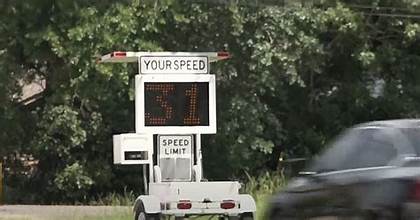Car Insurance, Speed Cameras, And Slow Drivers Caught Lawmakers’ Attention This Session

In the ever-evolving landscape of car insurance, it’s crucial to stay informed about the latest developments that can impact your coverage and premiums. One such area of focus that has garnered significant attention in recent times is the relationship between car insurance, speed cameras, and slow drivers. As lawmakers grapple with ensuring road safety while addressing the concerns of motorists, understanding these dynamics becomes paramount for all drivers.
The Rise of Speed Cameras: Implications for Car Insurance
Speed cameras have become ubiquitous fixtures on roadways worldwide, serving as automated enforcement tools to detect and deter speeding violations. While their primary goal is to enhance road safety by reducing speeding incidents, the presence of speed cameras also has implications for car insurance premiums.
Impact on Insurance Rates
Insurance companies often take into account a driver’s history of traffic violations when determining premiums. Speeding tickets, detected either by law enforcement officers or speed cameras, can result in higher insurance rates due to the increased risk associated with reckless driving behavior. Therefore, staying mindful of speed limits and avoiding speeding violations is not only crucial for road safety but also for maintaining affordable car insurance coverage.
Mitigating Risks
For drivers concerned about the impact of speed cameras on their insurance premiums, adopting safe driving practices is key. This includes adhering to posted speed limits, remaining vigilant for speed camera warnings, and utilizing advanced driver-assistance systems that help prevent speeding incidents. By demonstrating a commitment to safe driving, motorists can mitigate the risk of premium hikes resulting from speeding violations.
Addressing the Challenge of Slow Drivers: Legal and Insurance Considerations
While speeding remains a significant concern on roadways, the presence of slow drivers poses its own set of challenges for lawmakers and insurance providers alike. Slow-moving vehicles can impede traffic flow, increase the risk of accidents, and frustrate other drivers. As such, policymakers have turned their attention to addressing this issue through legislative measures and insurance policies.
Legislative Responses
Lawmakers have introduced various measures aimed at addressing the issue of slow drivers, including minimum speed limits, lane usage regulations, and education campaigns promoting safe driving practices. By establishing clear guidelines for acceptable driving speeds and behavior, legislators seek to improve road safety and reduce congestion caused by slow-moving vehicles.
Insurance Considerations
From an insurance perspective, the presence of slow drivers can contribute to heightened accident risks and insurance claims. Drivers may be more prone to rear-end collisions, sudden braking incidents, and other accidents resulting from interactions with slow-moving vehicles. Consequently, insurance companies may adjust premiums to reflect the increased risk associated with driving in areas with significant traffic congestion or a prevalence of slow drivers.
Navigating the Intersection: Practical Tips for Drivers
As drivers navigate the complex landscape of car insurance, speed cameras, and slow drivers, several practical tips can help them maximize their coverage and minimize risks on the road:
1. Stay Informed
Keep abreast of local traffic laws, speed limits, and enforcement measures, including the presence of speed cameras in your area. Awareness is key to avoiding violations and maintaining affordable insurance rates.
2. Practice Defensive Driving
Adopt defensive driving techniques to anticipate and respond to potential hazards on the road, including encounters with slow drivers and speed enforcement zones. Maintaining a safe following distance and remaining alert at all times can help mitigate risks.
3. Invest in Advanced Safety Features
Consider investing in vehicles equipped with advanced safety features such as adaptive cruise control, collision avoidance systems, and lane departure warnings. These technologies can help prevent accidents and reduce the likelihood of insurance claims.
4. Review Your Coverage Regularly
Periodically review your car insurance coverage to ensure it aligns with your driving habits, needs, and budget. Explore options for discounts and incentives offered by insurance providers for safe driving behavior.
Conclusion
In the dynamic realm of car insurance, speed cameras, and slow drivers, staying informed and proactive is essential for drivers seeking to protect themselves and their vehicles. By understanding the implications of speed enforcement measures, navigating interactions with slow-moving vehicles, and adopting safe driving practices, motorists can optimize their insurance coverage and enhance road safety for all.